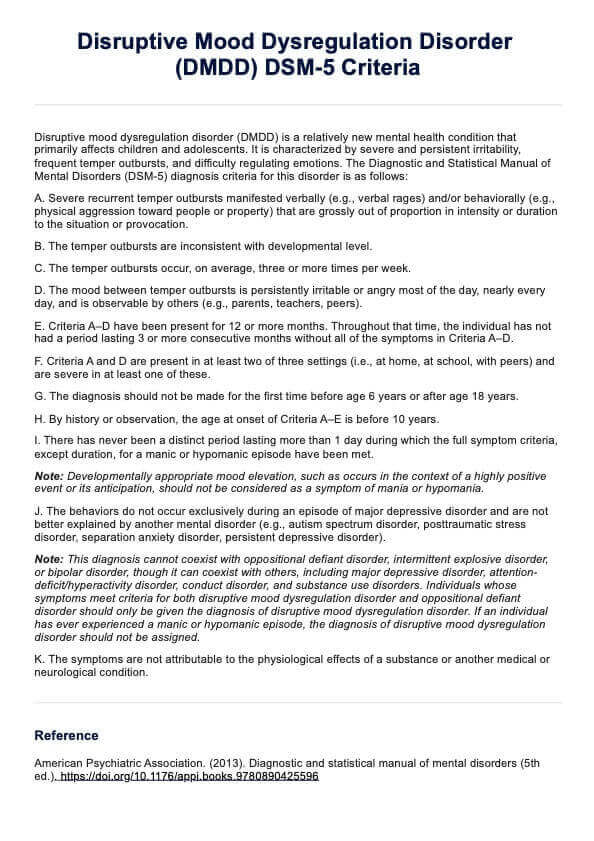Children with DMDD often present with comorbid conditions such as ADHD, anxiety disorders, and major depressive disorder. Assessing and addressing these comorbidities is essential for providing comprehensive care.

Disruptive Mood Dysregulation Disorder DSM-5 Criteria
Learn about the DSM-5 criteria for disruptive mood dysregulation disorder. Download a free PDF handout for your mental health practice.
Use Template
Disruptive Mood Dysregulation Disorder DSM-5 Criteria Template
Commonly asked questions
Effective treatment for DMDD typically involves a combination of Cognitive Behavioral Therapy (CBT), parent management training, and possibly pharmacological interventions such as stimulants, SSRIs, or antipsychotics.
Providing psychoeducation about DMDD, guiding parents in implementing consistent behavioral strategies, and connecting families to support groups and resources can significantly aid in managing the disorder.
EHR and practice management software
Get started for free
*No credit card required
Free
$0/usd
Unlimited clients
Telehealth
1GB of storage
Client portal text
Automated billing and online payments











